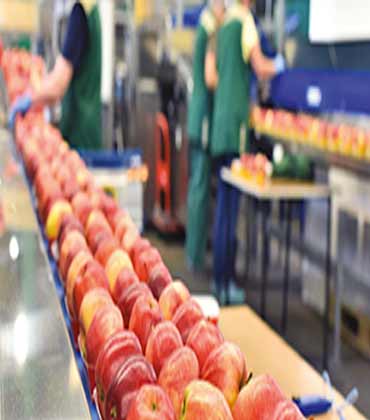THANK YOU FOR SUBSCRIBING
By Todd Jongen, Director Non-Foods Product Development and Packaging Science, US Foods
A Brief History of Carry-Out Food Packaging
By Robert Erhard, Head of Dairy, Corporate Sustainable Agricultural Development, Nestle
Transforming the Food Industry Through a Sustainable...

Food Safety Culture
Steve Hammond, Food Safety & Quality Assurance Professional, Sandridge Crafted Foods

 Steve Hammond, Food Safety & Quality Assurance Professional, Sandridge Crafted Foods
Steve Hammond, Food Safety & Quality Assurance Professional, Sandridge Crafted FoodsThere has been a drive in recent years to create a food safety culture within the food manufacturing industry. The focus is not only at executive and leadership levels, but also includes the entry level employees working in the trenches and all levels in between. The goal is to affect mindset and behavior toward food safety throughout an organization.
An organization with a strong commitment to food safety may still struggle with costly food safety issues if the culture of the organization at the entry level positions does not align with the culture of the leadership team. Developing a culture throughout all levels of the organization is key to ensuring that all employees share the organization’s values, beliefs, behaviors, and attitudes toward food safety. Having a program that encourages and motivates employees to do the right thing when no one is looking, speaks volumes about the organization’s culture.
Where to start?
All food manufacturing facilities are not created equal. Many organizations produce different products, use different processes, and are regulated by different governing bodies. A hazard analysis / risk assessment for your facility is a great jumping off point.
Begin with a review of your facilities manufacturing processes and identifying any potential food safety hazards such as allergens, foreign material, pathogens, and other contaminates that could jeopardize the safety of your products. Understanding the hazards at your facility will provide you with the information needed to develop a plan to help prevent costly food safety incidents from occurring. Food safety incidents that reach the consumer can often result in product recalls, customer complaints, reputational damage, lost sales, and illness or bodily harm. A food safety plan that includes good manufacturing practices (GMP’s), safe handling practices and process controls will become the backbone that your food safety culture program will hang on.
"Understanding the hazards at your facility will provide you with the information needed to develop a plan to help prevent costly food safety incidents from occurring"
I have a Food Safety Plan. Now What?
Now that you have reviewed your processes, identified your hazards, and have a written plan in place to prevent those hazards from being passed downstream to your customers, you can’t help but to wonder… how do we implement this plan? That’s a good question, and that’s where food safety culture comes into play.
• Determine your education and training needs for your organization.
• Provide ongoing food safety training to all employees.
• Communicate the organizations goals and the importance of food safety.
• Share with the employees the task specific items that they will be able to perform to help keep your organizations product safe for your customers.
• Encourage their participation and recognize their involvement.
Controlling and monitoring of all the potential hazards found in a facility cannot be done by a mere few people. Investing in your employees and teaching them about the hazards and how to identify them will give the organization more hands on deck. Keeping your employees engaged with the desire to “do what’s right when no one is looking” is often accomplished by rewarding and giving recognition. Utilizing recognition programs like Food Safety Hero of the Week / Month on your bulletin boards, company website, or social media platforms may help drive participation. Reward programs and incentives such as prize raffles where employees can benefit from reporting hazards to their leadership team, often brings a sense of competition to the production floor. Ultimately, it’s all about your employees. Without their participation, it will be difficult to maintain a successful food safety culture. Discovering and utilizing creative ways to keep your employees engaged in food safety will only improve the likelihood of a successful food safety culture program within your organization.
The process of creating a robust food safety culture does not happen overnight. Do not let this discourage you. Developing a food safety culture is an investment that takes time. Investing in each one of your employees from your senior leadership team, down to your entry level new hire. Build the framework, invest in your people, reward participation, and recognize involvement, and your program will grow stronger and stronger each day.
Read Also















